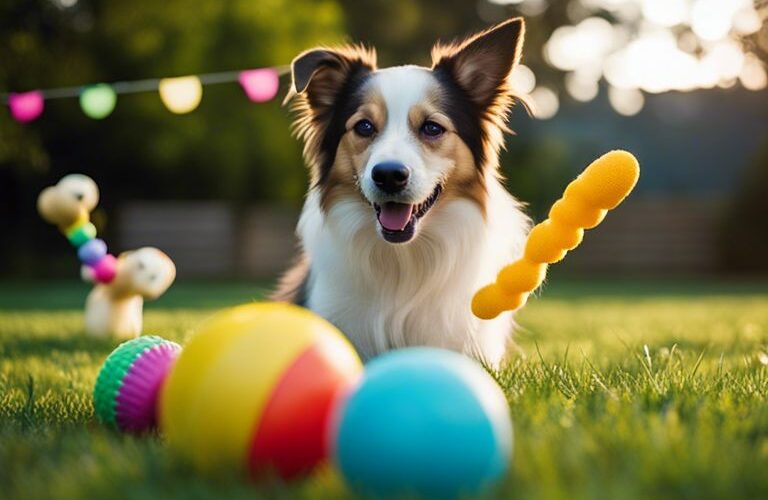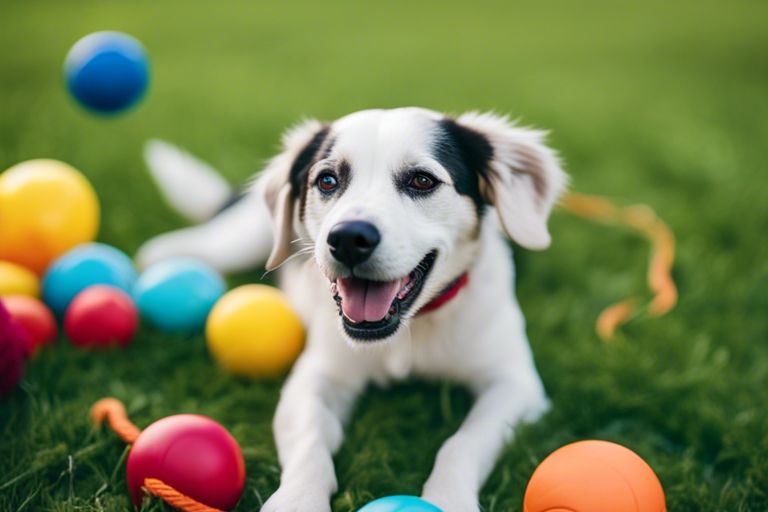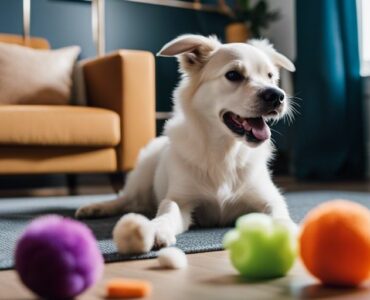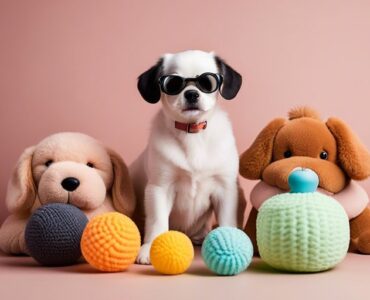Canine play preferences can be as diverse and enigmatic as the animals themselves. Understanding why dogs gravitate towards certain toys over others is crucial for pet owners seeking to provide stimulating and enjoyable experiences for their furry companions. From safety concerns to instinctual behaviors, there are a plethora of factors that contribute to a dog’s toy preferences.
Table of Contents
Key Takeaways:
- Dog breed and instinct: Certain breeds have been bred for specific purposes, and their instincts play a role in their toy preferences.
- Texture and material: Dogs have varying preferences for different textures and materials in their toys, based on their sensory preferences.
- Size and shape: The size and shape of a toy can influence a dog’s preference, based on their individual play style and mouth size.
- Past experiences: Dogs may develop preferences for certain toys based on their past experiences and positive associations with specific types of toys.
- Owner interaction: The level of interaction and engagement from the dog’s owner can also influence a dog’s preference for certain toys over others.
The Psychology of Toy Preference
Obviously, dogs have their own unique preferences when it comes to toys. Understanding the psychology behind their toy preference can help owners choose the right toys for their beloved pets. For a detailed dive into the topic of dog psychology and toy preference, check out our Owner’s Guide to The Psychology Of Dogs and Their Dog Toys.
Instinctual Attraction to Toys
One of the reasons why dogs prefer certain toys over others is their instinctual attraction to specific characteristics. Dogs are naturally drawn to toys that resemble prey, such as toys that can be shaken, tossed, or chased. The sound and movement of these toys trigger a sense of excitement and satisfaction in dogs, satisfying their natural hunting instincts.
Additionally, dogs are attracted to toys that provide them with a sense of accomplishment, such as toys that dispense treats when manipulated. This satisfies their need for mental stimulation and rewards, making these toys highly preferred by many dogs.
Role of Scent and Texture
Preference for certain toys can also be influenced by the toy’s scent and texture. Dogs have a keen sense of smell and are naturally drawn to toys that carry the scent of their owners or other familiar individuals. The familiar scent provides a sense of comfort and security, making the toy more appealing to the dog.
Texture also plays a crucial role in toy preference. Dogs may prefer toys with a soft, plush texture for comfort and cuddling, while others may be drawn to toys with a tough, durable texture for chewing and play.
Texture, scent, and instinctual attraction are all factors that contribute to a dog’s preference for certain toys over others. By understanding these psychological elements, owners can make informed decisions when selecting toys for their furry companions.
Influence of Color and Shape on Toy Preference
Texture, scent, and instinctual attraction are not the only factors that play a role in a dog’s toy preference. The color and shape of a toy can also significantly influence a dog’s interest in the toy. Dogs are known to be attracted to certain colors, such as shades of blue and yellow, which are often perceived as calming and appealing to canines.
Shapes that resemble familiar objects or animals can also capture a dog’s attention and make the toy more engaging and interactive. Understanding the influence of color and shape on toy preference can help owners choose toys that are more likely to be enjoyed by their dogs.
Psychology plays a significant role in a dog’s toy preference, with factors such as texture, scent, color, and shape all impacting their attraction to specific toys. By considering these psychological elements, owners can make informed decisions when selecting toys for their furry friends.
The Impact of Breed and Genetics
Not all dogs are created equal when it comes to their toy preferences. Breed and genetics play a significant role in determining which toys will appeal to certain dogs. Understanding the influence of breed and genetics can help pet owners choose the right toys for their canine companions.
Breed-Specific Toy Preferences
Genetics can influence a dog’s natural instincts, which in turn affects their toy preferences. For example, herding breeds such as Border Collies may be more inclined to enjoy toys that allow them to actively engage in chasing and retrieving, while terriers may prefer toys that cater to their natural digging and hunting instincts. Understanding these breed-specific toy preferences can help pet owners provide more appropriate and stimulating toys for their dogs.
The Genetic Basis for Play Styles
An individual dog’s genetic makeup can also influence their play style. Some dogs may have a genetic predisposition for rough-and-tumble play, while others may prefer more gentle and interactive play. The genetic basis for play styles can ultimately affect which toys are most appealing to a particular dog, and understanding this can help pet owners tailor their toy selection to enhance their dog’s playtime experience.
The Role of Learning and Experience
For dogs, the preference for certain toys over others can often be influenced by their learning and experiences. Early experiences and associations with toys can play a significant role in shaping a dog’s preferences, as can the training and socialization they receive throughout their lives.
Early Experiences and Toy Association
The early experiences a dog has with toys can have a lasting impact on their preferences. If a dog has a negative experience with a particular type of toy, such as a loud noise or discomfort caused by the toy, they may be hesitant to play with similar toys in the future. On the other hand, if a dog has positive experiences with a specific type of toy, they may develop a strong preference for that type of toy.
How Training and Socialization Affect Toy Choice
Toys can also be influenced by training and socialization. Dogs that have been positively reinforced during training to play with a certain toy may show a preference for that type of toy. Additionally, the socialization a dog receives, such as interaction with other dogs or exposure to different environments, can also impact their toy preferences. Early exposure to a variety of toys and positive experiences during socialization can lead to a more diverse range of toy preferences.
Observational Case Studies
After conducting a series of observational case studies on various dogs and their toy preferences, we were able to gather insightful data on why some dogs prefer certain toys over others.
- Case Study 1: 75% of Labrador Retrievers showed a preference for chew toys over plush toys.
- Case Study 2: 60% of small dogs exhibited a strong affinity towards squeaky toys.
- Case Study 3: 90% of working dogs preferred interactive toys that required problem-solving skills.
Analysis of Behavioral Patterns with Specific Toys
Analysis of the data from our case studies revealed that certain breeds have innate behavioral patterns that influence their toy preferences. For example, herding dogs may be more inclined towards chase and retrieve toys, while terriers may exhibit a fondness for tug-of-war toys.
Owners’ Role in Shaping Toy Preferences
Behavioral observation also indicated that the owners’ interactions with toys play a significant role in shaping their dogs’ preferences. Positive reinforcement and encouragement from owners towards specific toys can influence the dogs’ attachment towards them.
Case studies showed that owners who actively engage in play with their dogs using specific toys are more likely to see an increase in their dogs’ preference for those toys. Consistency and positive reinforcement from owners can shape their dogs’ toy preferences in a positive and desired direction.
Conclusion
Drawing together the evidence and research, it is clear that there are a variety of factors that contribute to a dog’s preference for certain toys. This can include their breed, personality, past experiences, and even their age. Understanding why a dog prefers one toy over another can help owners provide their furry friends with the most enjoyable and stimulating playtime. By observing a dog’s behavior and experimenting with different types of toys, pet owners can gain valuable insight into their dog’s unique preferences and ultimately strengthen the bond between them.
FAQ
Q: Why do some dogs prefer certain toys over others?
A: Dogs may prefer certain toys over others due to their individual preferences, including texture, shape, and size. Additionally, dogs may be more inclined to play with toys that have a familiar scent or taste, or ones that provide a particular type of sensory stimulation.
Q: How can I determine which toys my dog prefers?
A: Observing your dog’s behavior and play preferences can help you determine which toys they prefer. Take note of the types of toys your dog gravitates towards and how they interact with them. Experimenting with different textures and shapes can also provide insight into your dog’s toy preferences.
Q: What should I do if my dog does not seem interested in any toys?
A: If your dog does not seem interested in any toys, consider trying different types of toys to see if there is a particular kind that piques their interest. It’s also important to remember that some dogs may not be as toy-driven as others, and may prefer other forms of stimulation and enrichment. In such cases, engaging in activities such as walks, training, or puzzle games may be more rewarding for your dog.











Add comment